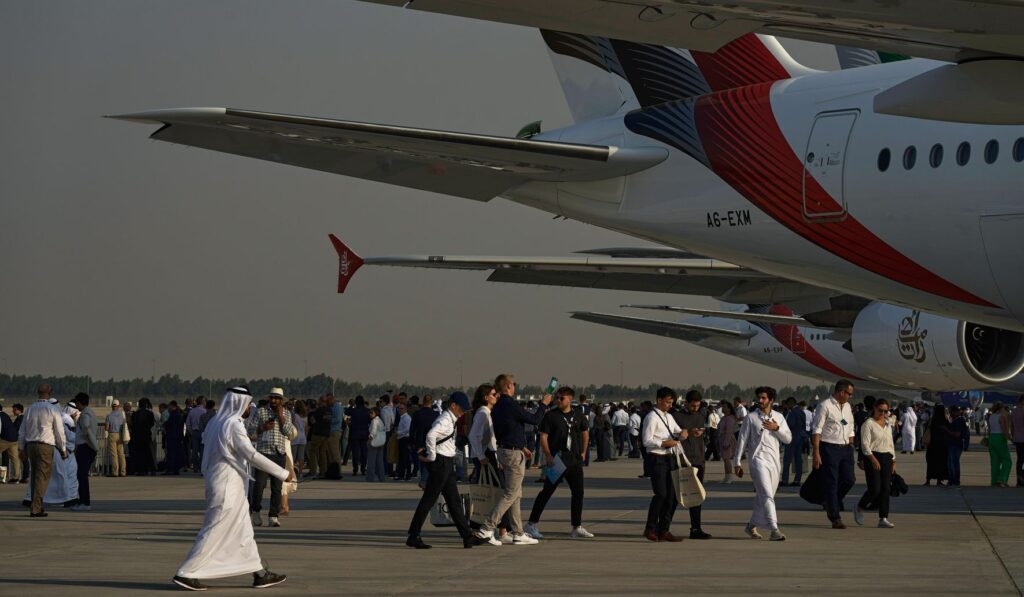This piece captures the scale, business energy, and strategic signals from the Dubai Air Show, where strong U.S. industry participation met broad international attendance and diverse aviation technology on display.
This year’s Dubai Air Show drew robust attendance and displays from U.S. defense industry companies large and small, as well as participation from more than 150 other nations. Exhibitors packed static displays and indoor halls with aircraft, sensors, and maintenance solutions, making the show a dense marketplace for deals, partnerships, and technical demonstrations. The mix of big primes and nimble contractors created an atmosphere equal parts competition and collaboration.
Deal-making happened on the tarmac and in private meeting rooms, with procurement officers, program managers, and commercial buyers trading capability briefs and schedules. The event highlighted the importance of interoperability and logistics as buyers evaluated platforms alongside sustainment and training packages. U.S. firms aimed to showcase not just hardware but long-term industrial support and offset arrangements.
Unmanned systems and sensors drew steady attention, with several companies emphasizing persistent ISR and systems integration. Attendees asked tough questions about data security and export controls, reflecting the tension between eager buyers and regulatory realities. Firms that framed their offerings around secure, export-compliant solutions gained more traction in conversations.
Maintenance, repair, and overhaul services got heavy scrutiny—buyers want aircraft that come with predictable life-cycle costs and local support. Several U.S. companies pitched regional partnerships to provide quicker turnarounds and workforce training. Those pitches often included commitments to supply-chain transparency and parts availability.
Small and medium-sized suppliers leveraged the show to meet prime contractors and defense ministries, using sharp displays and live demos to punch above their size. For many, the Air Show is more about conversations that turn into trials and procurement follow-ups than immediate one-off sales. Getting a foot in the door with a regional maintenance provider or systems integrator can lead to multi-year work.
On the commercial side, regional carriers and leasing firms scoped out narrowbody and widebody offerings as traffic projections keep climbing across the Gulf. Aircraft manufacturers balanced their defense portfolios with cabin and engine pitches, aiming to remind buyers that they support full-life operations. Finance teams circulated to talk lease structures and delivery windows.
Technical briefings emphasized software-defined capabilities and modular upgrades, which allow platforms to evolve without full replacements. This approach appealed to budget-conscious buyers who want growth paths rather than fresh purchases every decade. The message was clear: flexibility and upgradability matter as much as raw performance.
Export controls and geopolitical risk were under the surface of many conversations, shaping what systems were shown openly and what demonstrations required closed-door sessions. Vendors navigated a complex web of rules while trying to keep pitches attractive to diverse customers. Those who could explain compliance processes simply won trust faster.
Workforce development and training packages were frequently part of the sales pitch, as governments push for local content and skills transfer. Companies that combined hardware with clear training pathways and certification plans stood out to delegations focused on long-term sovereignty. These offers often included simulator solutions and instructor exchanges.
Sustainment economics also influenced procurement choices, with life-cycle costing models increasingly central to bidding strategies. Buyers compared predicted operating hours, parts costs, and contractor support models before making commitments. Vendors that provided transparent data on total ownership cost had a competitive edge.
Beyond contracts, the show served as a barometer for regional sentiment on defense priorities and aviation growth, signaling where investment might flow next. Conversations ranged from urgent modernization needs to longer-term plans for air mobility and border security. Observing who met whom gave attendees a clear sense of emerging alliances and procurement timelines.
Back on the stands, technology demonstrations mixed legacy upgrades with next-gen concepts, giving visitors a full view of current capabilities and where vendors see the market heading. This dual display helped buyers imagine immediate improvements and future transition paths. The result was a marketplace that felt both practical and forward-looking.
For U.S. companies, the show reinforced that presence matters: being visible, responsive, and clear on export and sustainment terms builds confidence. The combination of large prime exhibitions and smaller firms with niche tech created layered opportunities for cooperation. In a crowded field, practical support, clear compliance, and durable partnerships made the difference for continuing business in the region.



